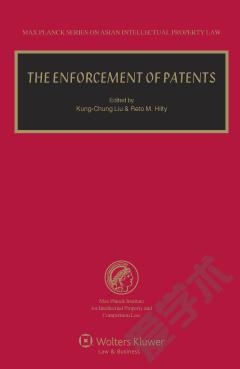The Enforcement of Patents
Obstructions to patent enforcement exist all over the world. Increasingly, unauthorized players use protected inventions to conduct their own commercial businesses. The question must be asked whether available law provides for sufficient disincentives against the infringement of granted rights. If a patent right cannot be properly enforced, it is of little value to its owner; moreover, under-enforcement ultimately leads to tension within the entire system of protection, generating harmful repercussions and sooner or later producing dysfunctional effects. Yet protection that is too wide risks hindering further innovation.Carefully balancing the scope of legal protection with the impact of enforcement measures is essential. The more the legal focus has moved to questions of enforcement, the more the imbalance within the system of legal protection has been revealed. In 2010 an international conference was organized around these issues in Taipei by the Max Planck Institute for Intellectual Property and Competition Law and the Academia Sinica, Taipei, with the support of the IP Academy Singapore, the Institute of Law for Science and Technology of National Tsing Hua University, and the Graduate Institute of Intellectual Property, National Chengchi University. The aims were to provide doctrinal clarification of some common misconceptions and myths surrounding patent enforcement, and to discuss the “more economic approach,” which is gaining growing acceptance across many countries.This publication, derived from that conference, carries through those objectives, and also serves as a handbook for patent enforcement in major Asian jurisdictions, where there is huge potential for economic growth and patent cooperation. In addition it looks into the experiences of the centralized system of patent enforcement in the United States, and into the European Union’s efforts to establish a truly international patent right governed by a unitary European patent court. Scholars, judges and practitioners were also invited to comment on the conference reports, greatly enriching the book.Among the many matters treated in depth are the following:? dysfunctional use of the patent system, such as misappropriation prior to grant, abuse of granted right;? the interaction between patent enforcement and competition law;? safeguarding the investor’s possibilities to obtain a return on his investments during a limited period of time;? the need to challenge the industries’ contentions and the assertions of lobbying groups;? widespread uncertainty about the impact of patent infringements;? and absence of recognized standards on how to measure the losses of the industries concerned.The authors emphasize that issues of enforcement cannot be addressed in an isolated manner. The patent system, they show, can be improved by first understanding the unique features of certain jurisdictions that can spur reflections and mutual learning. Patent lawyers, regulators, and policymakers everywhere stand to benefit immeasurably from this richly significant book.
{{comment.content}}








 京公网安备 11010802027623号
京公网安备 11010802027623号